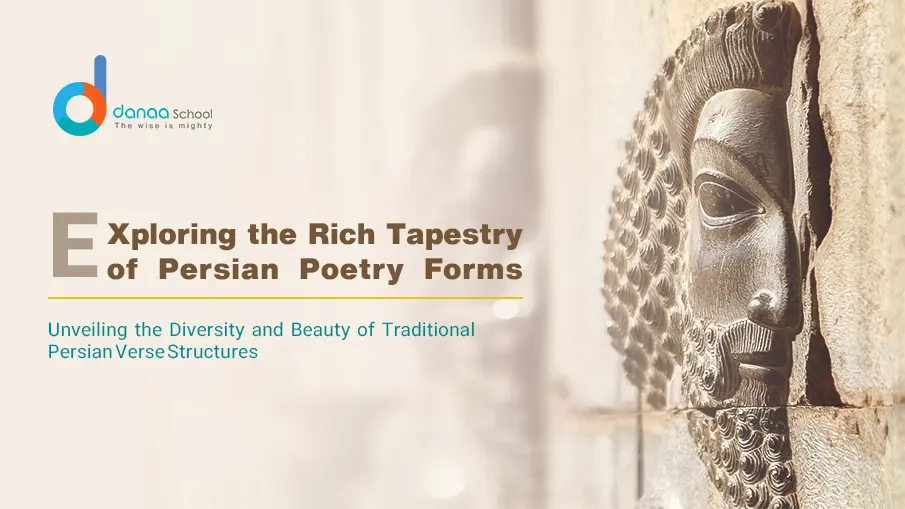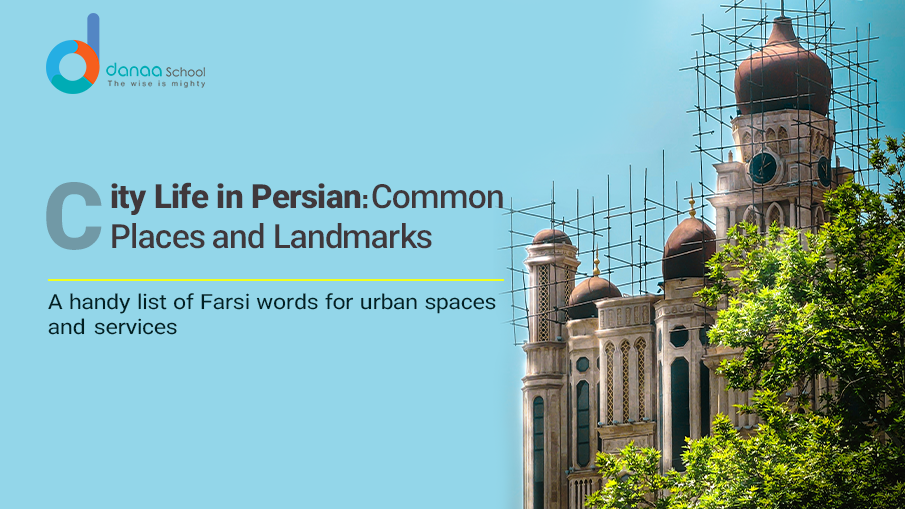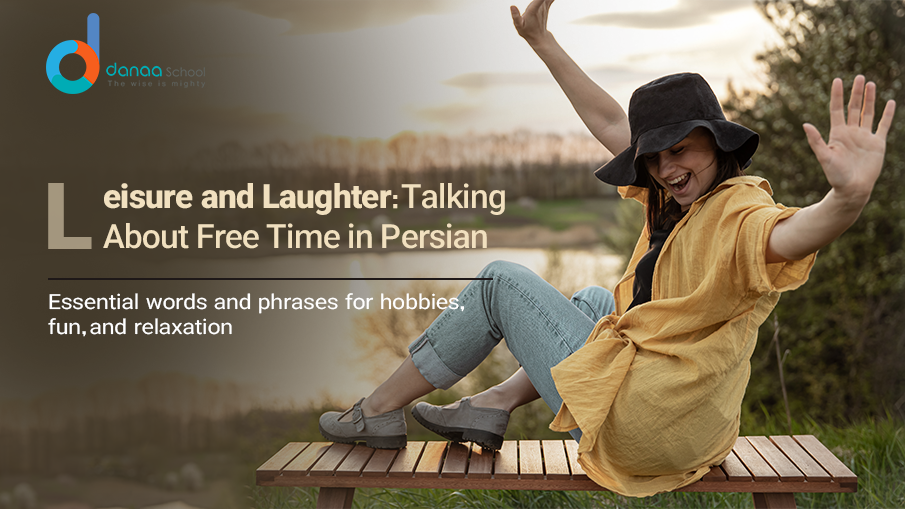Introduction to Persian Poetry
Persian poetry is a testament to Iran’s rich cultural and literary heritage and the wider Persian-speaking world. Across centuries, Persian poets have crafted exquisite verses that resonate with emotion, beauty, and philosophical depth. This article explores the various Persian poetry forms, exploring their origins, structures, and notable poets.
Ghazal
Definition and Origin
The ghazal, derived from the Arabic word meaning “to talk amorously,” is a poetic form characterized by its lyrical expression of love, longing, and mysticism. It originated in seventh-century Arabia and later flourished in Persian literature under the patronage of Persian courts. Persian poets such as Rumi and Hafez refined and popularized the form, who elevated the ghazal to new heights of poetic expression.
Structure and Themes
Typically, a ghazal consists of several couplets (called “bayt” in Arabic), each sharing a common meter and rhyme scheme. The opening couplet, known as the “matla,” sets the tone and often includes the poet’s pen name. The themes explored in ghazals range from unrequited love and spiritual devotion to the beauty of nature and the ephemeral nature of life. The form’s structure allows poets to convey complex emotions and profound insights concisely and evocatively, with each couplet functioning as a standalone poetic unit while contributing to the poem’s overall theme.
Prominent Ghazal Poets
Renowned Persian poets such as Hafez, Rumi, and Saadi have significantly contributed to the ghazal genre. Their works are celebrated for their timeless beauty and profound insights into the human condition. Hafez, known as the “Tongue of the Hidden,” is revered for his mystical ghazals that explore themes of divine love and spiritual ecstasy. Rumi, the bestselling poet in the United States, is renowned for his soul-stirring verses that transcend cultural and religious boundaries. Saadi, often called the “Master of Speech,” is admired for his ghazals that blend wisdom, humor, and social commentary.
Rubaiyat
Meaning and History
The rubaiyat, meaning “quatrains” in Persian, is a poetic form consisting of four-line stanzas with a specific rhyme scheme. This form gained popularity in Persia during the medieval period, thanks to the prolific poet Omar Khayyam. The rubaiyat became synonymous with Khayyam’s name, thanks to his timeless collection of quatrains known as the “Rubaiyat of Omar Khayyam,” which has been translated into numerous languages and continues to captivate readers worldwide.
Structure and Characteristics
Each rubaiyat stanza follows an AABA rhyme scheme, with the first, second, and fourth lines rhyming. This structure allows for concise yet impactful expressions of philosophical or existential themes, often accompanied by vivid imagery. The rubaiyat’s brevity and simplicity belie its profound depth, as poets like Khayyam masterfully weave together themes of love, mortality, and the passage of time in just a few lines. The form’s flexibility and accessibility have made it a popular choice for poets throughout history, from medieval Persia to contemporary times.
Notable Poets of Rubaiyat
Omar Khayyam remains the most famous exponent of the rubaiyat form, with his timeless verses exploring themes of fate, mortality, and the pursuit of pleasure. Khayyam’s rubaiyat are celebrated for their philosophical musings, existential insights, and exquisite craftsmanship. Other notable poets who have contributed to the rubaiyat tradition include Rumi and Attar, whose quatrains reflect Persian poetry’s spiritual and mystical dimensions. Each poet brings a unique perspective and voice to the rubaiyat form, enriching the literary landscape with their timeless verses.
Masnavi
Overview and Origins
The masnavi, a narrative poem composed in rhyming couplets, holds a special place in Persian literature for its intricate storytelling and moral teachings. Originating in Persia during the medieval period, the masnavi became a popular medium for conveying spiritual and ethical principles. The form was perfected by poets like Rumi, whose magnum opus, the “Masnavi-e Ma’navi” or “The Spiritual Couplets,” is considered one of the greatest works of Persian literature. The Masnavi form allows poets to weave together complex narratives and allegorical tales, exploring profound truths and ethical dilemmas through engaging stories and memorable characters.
Structure and Content
Masnavi’s poems typically consist of rhyming couplets with a consistent meter, allowing for fluid storytelling and musicality. The content often revolves around allegorical tales, parables, and anecdotes, conveying profound spiritual truths and ethical lessons. The masnavi’s narrative structure allows poets to explore complex themes and philosophical concepts through engaging stories and memorable characters. Rumi’s “Masnavi-e Ma’navi” is a prime example of the Masnavi form’s versatility and depth, as the poet explores into the depths of the human soul and the mysteries of the divine with wisdom and compassion.
Famous Masnavi Poets
Jalal ad-Din Rumi’s masterpiece, “Masnavi-e Ma’navi,” stands as the epitome of the masnavi tradition. Rumi’s Masnavi continues to inspire readers worldwide through its captivating stories and profound wisdom. The work covers many topics, from the nature of existence and the meaning of love to the search for spiritual enlightenment. Rumi’s poetic genius lies in his ability to convey profound truths in simple yet profound language, touching the hearts and minds of readers across generations. Other notable Masnavi poets include Attar, whose “Conference of the Birds” is a timeless allegory of the soul’s journey towards enlightenment, and Nizami Ganjavi, whose “Layla and Majnun” is a classic tale of tragic love and spiritual longing.
Qasida
Definition and Evolution
The qasida is a classical Arabic and Persian poetic form characterized by its elaborate structure and formal language. Originally composed as panegyrics in praise of kings and noblemen, the qasida evolved to encompass many themes, including love, nature, and morality. The form’s evolution reflects the Persian-speaking world’s changing social and cultural dynamics as poets adapted it to suit their artistic and thematic preferences. Over time, the qasida became a vehicle for expressing various emotions and ideas, from celebration and praise to lamentation and satire.
Components and Styles
A traditional qasida typically comprises several sections, each devoted to praising a different aspect of the subject. These sections often include an introduction, a description of the subject’s virtues, and a conclusion expressing the poet’s hopes and wishes. Different regions developed their styles and variations of the qasida, each with unique characteristics. The form’s formal structure and ornate language allow poets to convey deep emotions and lofty ideals with elegance and grace. Qasidas can vary from a few dozen lines to several hundred, depending on the subject and the poet’s artistic vision.
Renowned Qasida Poets
Prominent poets such as Abu Nuwas, Al-Mutanabbi, and Amir Khusrow have left an indelible mark on the qasida tradition with their eloquent verses and intricate poetic structures. Their qasidas continue to be studied and admired for their linguistic virtuosity and cultural significance. Abu Nuwas, known for his bold and sensual poetry, revolutionized the qasida genre by infusing it with wit, humor, and eroticism. Al-Mutanabbi, on the other hand, is celebrated for his majestic and eloquent qasidas that extol the virtues of bravery, honor, and chivalry. Amir Khusrow, a prolific poet and musician, enriched the qasida tradition with his innovative language and imagery, drawing inspiration from Persian, Arabic, and Indian literary traditions.
Tazkira
Explanation and Purpose
The tazkira, meaning “biographical anthology” in Persian, is a literary genre dedicated to preserving the lives and works of poets and writers. Tazkiras serve as invaluable resources for scholars and enthusiasts interested in the history and development of Persian literature. These anthologies provide biographical information about poets and samples of their poetry, allowing readers to gain insights into the cultural, social, and political contexts in which they lived and worked. Tazkiras play a crucial role in preserving the literary heritage of the Persian-speaking world, ensuring that the contributions of poets and writers are remembered and celebrated for generations to come.
Elements and Examples
Tazkiras typically contain biographical sketches of poets and selections of their most celebrated works. These anthologies often include anecdotes and critical evaluations of the poets’ contributions to the literary tradition. Examples of tazkiras include “Tazkira-e Nasiri” by Dawlatshah Samarqandi and “Tazkira-e Shu’ara-e Chahar Maaqaleh” by Suhrawardi. These works provide valuable insights into the lives and works of Persian poets, offering readers a glimpse into the rich tapestry of Persian literary history. Tazkiras also serves as a testament to the diversity and richness of Persian poetry, showcasing the myriad voices and perspectives that have shaped the literary landscape of Iran and the Persian-speaking world.
Influential Tazkira Writers
Scholars such as Zahir al-Din Nasr Muhammad Aufi and Abd al-Rahman Jami played a pivotal role in compiling and preserving tazkiras throughout history. Their efforts have ensured that the legacy of Persian poets and writers remains accessible to future generations. Aufi’s “Lubab al-Albab” and Jami’s “Nafahat al-Uns” are among the most famous tazkiras, known for their comprehensive coverage of Persian literary history and their insightful commentary on the works of poets. These scholars meticulously collected biographical information about poets, along with samples of their poetry, providing readers with a comprehensive overview of the literary landscape of the Persian-speaking world. Through their tazkiras, Aufi and Jami have preserved the voices and visions of countless poets, ensuring that their contributions to Persian literature are remembered and cherished for centuries to come.
Why Choose Danaa School?
Danaa School offers a unique opportunity to explore the rich Persian language and literature world. With experienced instructors and a comprehensive curriculum, Danaa School provides a supportive learning environment where students can develop their language skills and deepen their understanding of Persian poetry.
Benefits of Learning Farsi and Persian Poetry Verse Form at Danaa
1. Expert Instruction
Our faculty comprises highly qualified instructors with expertise in Persian language and literature. They provide personalized attention and guidance to help students achieve their learning goals.
2. Comprehensive Curriculum
Our curriculum covers all aspects of Farsi language learning, from grammar and vocabulary to reading and writing. In addition, students can explore the rich tradition of Persian poetry verse form, gaining insights into their historical and cultural significance.
3. Cultural Immersion
At Danaa School, we believe in the importance of cultural immersion for language learning. Students can immerse themselves in Persian culture through interactive lessons, cultural activities, and events and develop a deeper appreciation for its artistic heritage.
4. Community Engagement
Danaa School fosters a vibrant community of learners, providing opportunities for students to connect with fellow language enthusiasts, exchange ideas, and collaborate on creative projects.
Conclusion
Persian form in poetry constitute a vibrant tapestry of literary expression, reflecting the rich cultural heritage and spiritual traditions of Iran and the Persian-speaking world. From the mystical verses of Rumi to the philosophical musings of Omar Khayyam, Persian poets have left an indelible mark on world literature. By exploring the diverse types of Persian poetry and their unique characteristics, we gain a deeper appreciation for these exquisite verses’ enduring beauty and timeless wisdom. Register today and learn Farsi and Persian poetry with Danaa.
FAQs
1. **What are the key features of Persian poetry forms?**
Persian poetry forms are characterized by their lyrical beauty, intricate rhyme schemes, and profound philosophical insights. Each form has its unique structure and themes, allowing poets to explore various emotions and ideas elegantly and gracefully.
2. **Who are some of the most famous Persian poets?**
Renowned Persian poets include Rumi, Hafez, Omar Khayyam, Saadi, and Ferdowsi. These poets have significantly contributed to Persian literature, shaping the literary landscape with their timeless verses and profound insights into the human condition.
3. **What themes are commonly explored in Persian poetry?**
Persian poets often explore love, mysticism, nature, spirituality, and the human condition. These themes reflect Iran’s cultural and philosophical traditions and the Persian-speaking world, providing readers with insights into the complexities of life and the universe.
4. **How has Persian poetry influenced world literature?**
Persian poetry has significantly impacted world literature, inspiring poets and writers across cultures with its universal themes and timeless wisdom. The works of Persian poets have been translated into numerous languages and continue to resonate with readers worldwide, transcending cultural and linguistic boundaries.
5. **Where can I find English translations of Persian poetry?**
English translations of Persian poetry are available in various books, anthologies, and online platforms, allowing readers to explore the beauty of Persian verse in their native language. These translations capture the essence of Persian poetry, preserving the beauty and richness of the original texts for English-speaking audiences.
6. **Is prior knowledge of the Persian language required to study Persian poetry forms at Danaa School?**
Prior knowledge of the Persian language is optional to study Persian poetry forms at Danaa School. Our courses are designed to accommodate students of all levels, from beginners to advanced learners. Our experienced instructors provide comprehensive instruction and support, guiding students through the intricacies of Persian poetry forms with clarity and expertise.
7. **What resources does Danaa School offer to enhance the learning experience?**
Danaa School provides various resources to enhance the learning experience, including textbooks, multimedia materials, and access to online libraries and databases. Additionally, students can participate in cultural events, workshops, and discussions, allowing them to deepen their understanding of Persian language and literature in a dynamic and engaging environment.










